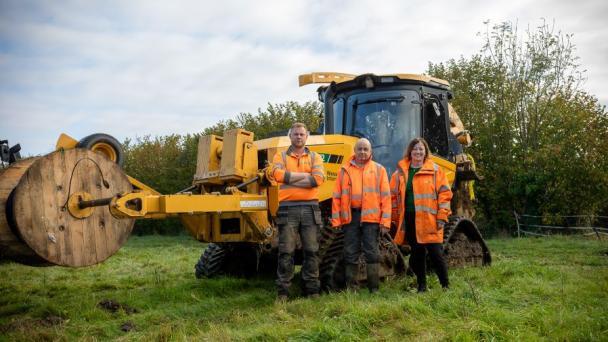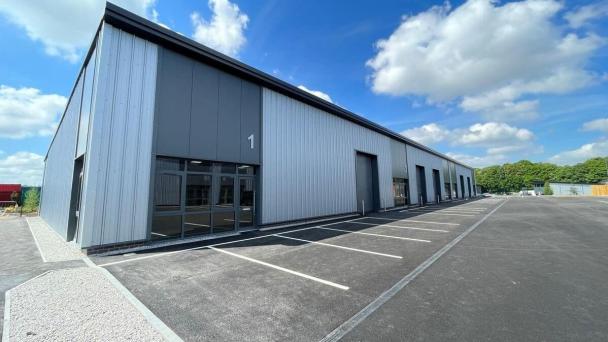A new 10-year strategy that “sits at the heart of plans to renew the UK” has been published by the government and will include proposals that are backed by £725bn in long-term funding for maintenance and major projects, which promises to “transform how infrastructure projects are planned and delivered”.

There’s a lot of buoyancy in the telecoms industry with people looking to invest in the infrastructure that will support a UK-wide gigabit-capable future. However, with the roll outs of full fibre coverage proving to be something of a saturated market, there’s been a slight shift in mindset from investors. Today, they’re looking at the long game rather than a short-term win.
Historically, financiers in our sector have put their faith in operators who can complete their network builds quickly because they’ll typically see a return on investment in five to ten years.
However, with more people working remotely and tapping into a greater number of devices, there is a higher demand for superfast, reliable broadband functionality. And the interesting thing is, fibre-to-the-premises (or fibre-to-the-home) only needs to be built once, so what happens then?
It’s no longer a ‘quick fix’ solution. Instead, this type of infrastructure is being put into place to connect communities, longer term. Today, full fibre is more like a utility roll out rather than a telecoms project we’ve been so used to all these years.
As a result, we’re seeing more financiers injecting vast sums of money into ‘build it once’ projects, knowing there won’t be a return for decades. So, what does that mean for UK altnets and how do they attract modern-day investors?
In our mind, we believe it’s not solely about the validity of the business case anymore, the team set-up plays a critical factor too.
When there are reportedly 60-80 active UK altnets, investors now want to know what makes an enterprise different from the rest, as well as why they’re a specialist and worth investing in. Having a USP – such as being a local entrepreneur or having a senior leadership team of industry-proven individuals – that proves they can compete in a saturated marketplace is crucial when standing out from the crowd.
Exploring the validity of connectivity ambitions
With a huge amount of altnets battling for build space – often in the same areas – much of the investment goes into the ambitious, but credible, build plans. They’re keen to fund organisations with talented experts in their team who live and breathe connectivity – from the design and planning departments all the way through to the sales and engineering functions.
And that’s where technical expertise comes into play. As investors already know they’re committing to a 25-year model, the next step is for them to feel confident that the horse being backed, can deliver.
That means altnets will be tasked with not only providing details around how many homes they’ll be ‘passing’, but the timeframe in which the build will be achieved, and, therefore, when their financiers can realistically expect to see a return. In other words, when will premises be ready for service?
From a commercial perspective, investors will typically seek assistance from an advisory firm to carry out their due diligence on the altnet’s financial model. They’ll delve into the take-up numbers – and if they’re realistic or not – what their broadband packages are being sold for, the types of services on offer, and whether it’s a residential ISP model or if they have a credible wholesale plan.
When it comes to the technical side of the build, somebody like us would investigate the deployment validity of the model. We’d typically assess, whether the network architecture was sound, what the proposition for design is, for example will it be in-house or partner-based? Additionally, we’d ask, ‘what vendor equipment will be utilised?’, ‘will it use BT’s PIA infrastructure?’, ‘what OSS/BSS plans and budget have been set aside to operate the network?’, and so on.
An additional point to add is what type of build is being financed? If it’s largely urban, where premises will be close together – such as terraced houses – the network can be rolled out relatively quickly and the costs will remain low, especially if the altnet is able to utilise BT PIA.
However, if it is rural, homes are often in small clusters and spaced out. That could mean a higher percentage of civil construction is required to pass and connect homes and therefore a higher Cost Per Premise Past (CPPP). This is often the ‘golden bullet’ used by the investment community when assessing which horse to back.
Having specialist teams in place to interrogate all this information means the infrastructure investment funds can go to the banks with a more robust finance plan because they’ve carried out incredibly detailed due diligence.
The consolidation of altnets
Over the next few years, we’ll continue to see many altnets bidding for funding to build their network. However, what happens when the ‘race to build’ is over and the pool of available towns and cities diminishes? Speaking to many industry peers, the belief is that these type of challenger brands will shrink down or come together, and later be acquired.
And so, the due diligence process will evolve to become more about supporting the investors and operators – advising them on the technical and commercial elements of the altnets and determining which are ‘the most attractive’ to acquire.
While it might be seen as a negative that altnets will consolidate over the coming years, that presents an interesting avenue for professional services companies – opening up the route to provide more consultative and ‘long-tail’ recurring service offerings.




